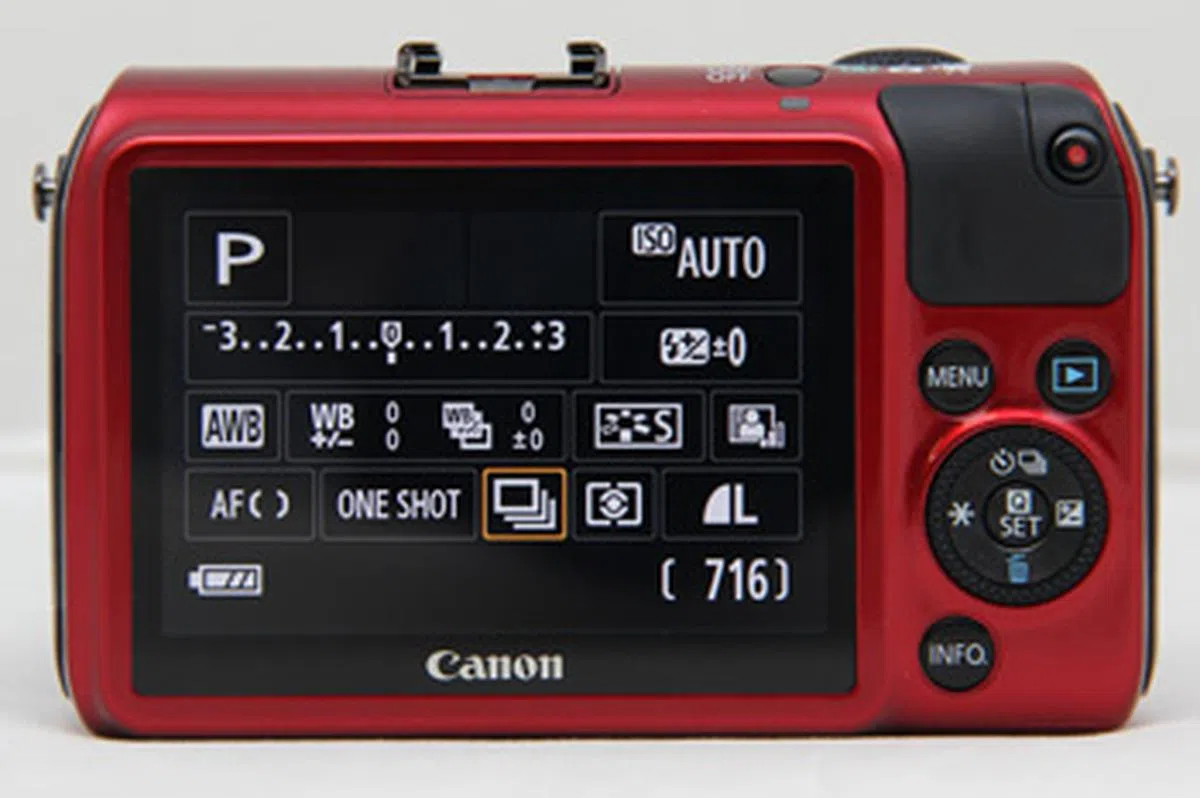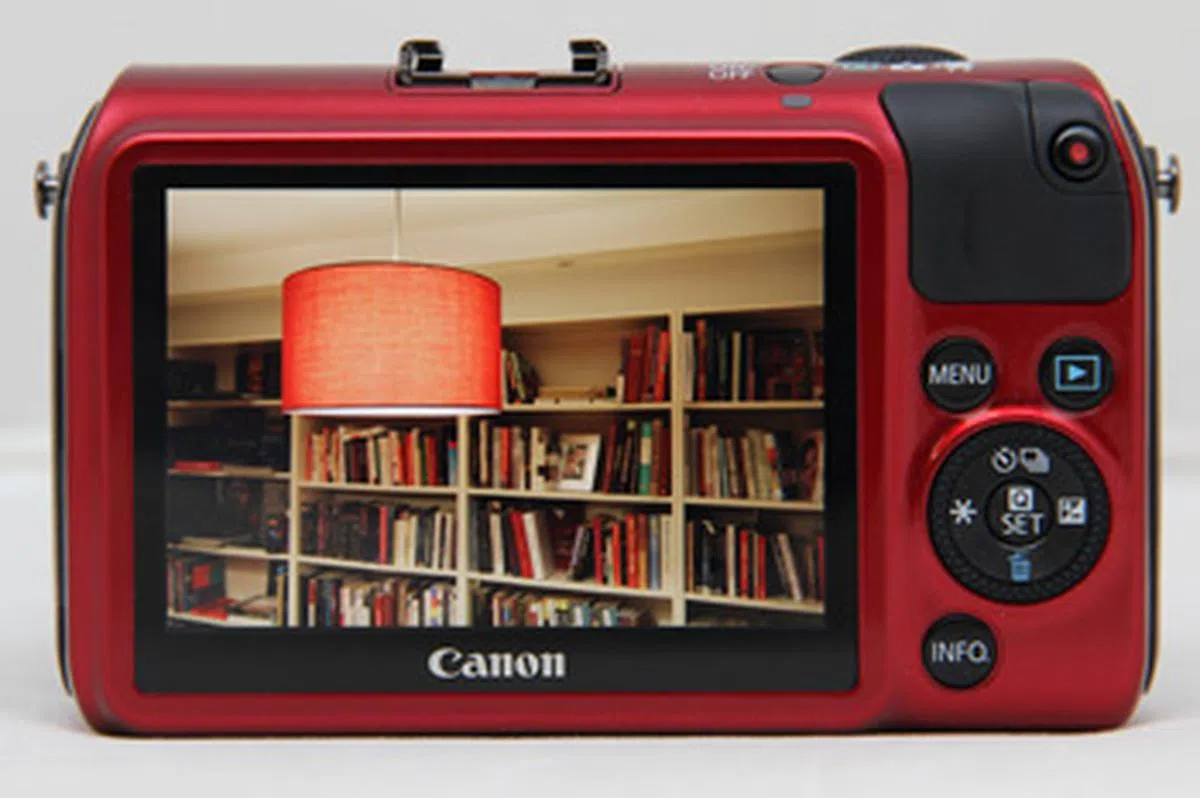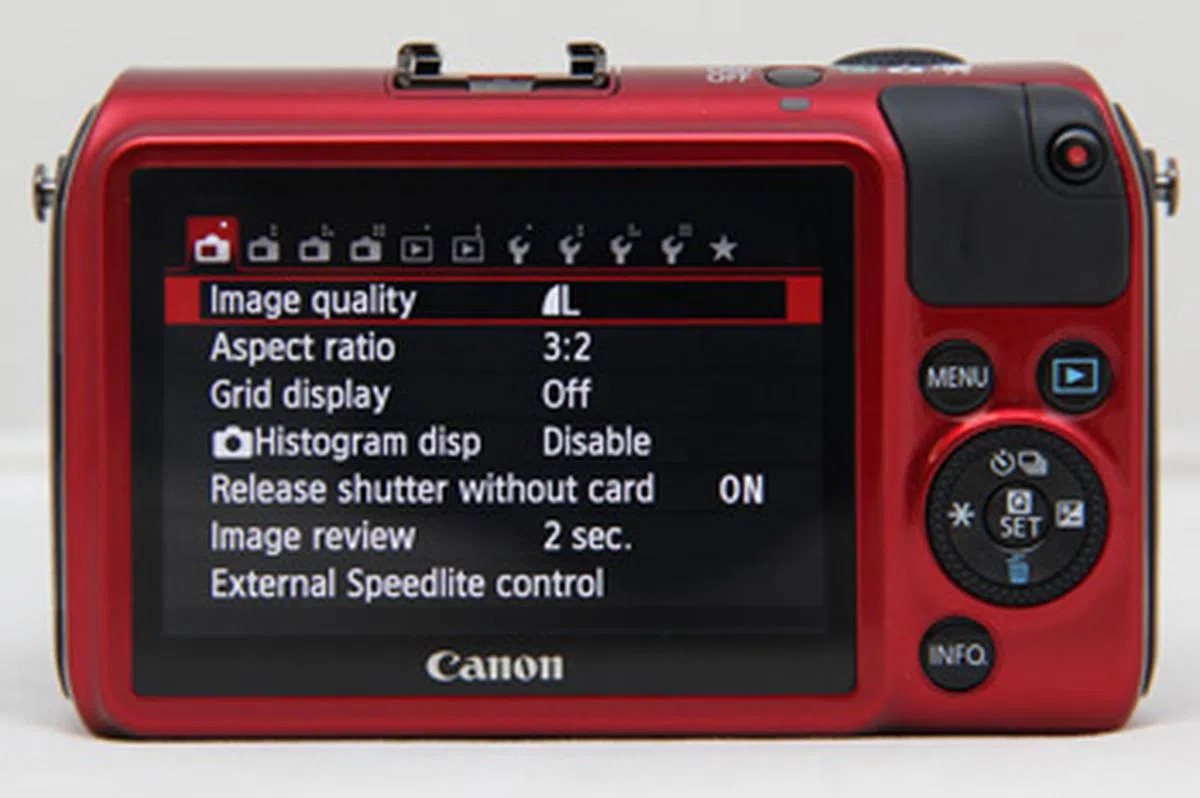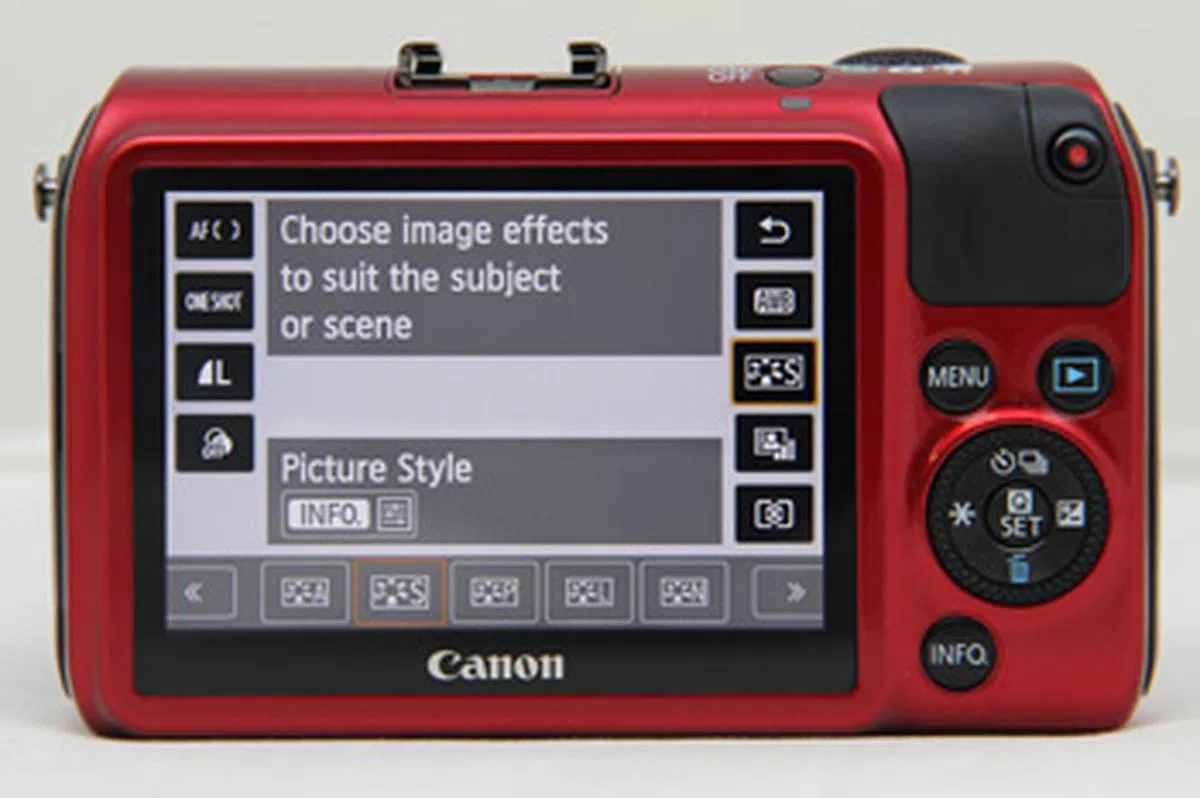Canon EOS M - An Attempt to Keep Up With Competition
The EOS M is Canon's first mirrorless system camera, launched in a sea of competing mirrorless cameras. While the camera shines with the fit and finish of a world-class product from a world-class company, it lags behind in one critical element. We give you our assessment.
By HardwareZone Team -
Introduction
The EOS M is Canon's first mirrorless system camera, coming four years after the first mirrorless system camera was introduced to the market by Panasonic's G1. Canon's four year lag has given everybody else a head-start. Olympus and Panasonic have established the Micro Four Thirds system with a comprehensive selection of native lenses. Sony rolled out the NEX series in 2010, and Canon's long-time competitor Nikon released their 1 series mirrorless cameras in late 2011.
Needless to say, the four-year long wait has raised expectations. Mirrorless cameras are eating into DSLR cameras' market share, and Canon needs to hit a home-run with its mirrorless system. How high are the stakes? By the end of 2011, mirrorless cameras took over 50% of the DSLR retail market in Japan (in Singapore, it's already an estimated 30 to 40%). Olympus, Panasonic and Sony took the lion's share out of that 50%. The EOS M is a critical product; it needs to be a good camera, it needs to appeal to the market and it needs to come in at a good price, or Canon risks losing even more of the interchangeable lens market.
Design & Handling
As a physical object alone, the EOS M is a thing of beauty. The body is made of solid magnesium and stainless steel; the paint is deep and rich. Our red review model looks gorgeous, like the paint on a car, the paint on the EOS M is textured and layered, adding an impressive sheen to its fit and finish. In the hands, the EOS M feels solid, while remaining light enough to hold single-handedly.
It's telling how the EOS M more closely resembles Canon's compact cameras than its DSLR cameras, because it works more like a bigger compact than a smaller DSLR. Full PASM manual controls are there, but hidden under the surface in the EOS M's menus. What looks like a zoom toggle on top, surrounding the shutter release, is in fact the EOS M's limited Mode dial, which only lets you select from Scene Intelligent Auto, Creative Auto (and other modes, activated via the on-screen menu) and Video.

What looks like a zoom toggle is the EOS M's limited Mode dial, which lets you select from Scene Intelligent Auto, Creative Auto (plus other modes via the on-screen menu) and Video.
Where there's a lack of manual controls on the body, the EOS M makes up for it with one of the best touch-screen UIs we've seen on a camera. Every setting you want is a few taps away, and the capacitive screen is responsive to the touch. The screen itself is gorgeous to look at, with a rich 1.04 million dots. The central Q button brings up a Quick menu overlay, and by cycling through the Info button, you gain access to a Quick Control menu where you can tap and change common settings. Even the standard Menu is touch-enabled; the touch targets there are a little small, but it works surprisingly well.
 |  |
 |  |
As we mentioned before, full manual controls are there, and can be activated via the on-screen menus. In aperture and shutter priority modes, the back wheel dial handles aperture and shutter speed respectively. In Manual mode, the wheel does double-duty, since there is no separate control dial. Instead, the exposure compensation button to the right switches the wheel dial between aperture and shutter speed control.
The minimal front and back grips offer just enough surface area to hold the camera, but not too much, so the strap is a must. The strap lugs are unique and innovative; they hinge around and offer more flexibility of movement.

This is the first time we've seen strap lugs like these. They're easy to lock in and swivel elegantly.
The EOS M lacks a built-in flash and the optional Speedlite flash attachment does not come with every kit, only the most expensive one (the S$1,349 kit with the Speedlite and two EF-M lenses, see here for all kit prices). That's a crime when other flash-less mirrorless system cameras come standard with flash attachments. When attached, the Speedlite adds substantial height to the camera. The lack of a built-in flash, and the bulk of its flash attachment, not to mention the fact that you have to pay extra for one, is a serious minus against the appeal of the EOS M.

The Speedlite flash attachment adds substantial bulk to the EOS M when attached.
Last but not least, battery life is woefully short at 230 images per charge. We ran it out easily in one weekend of shooting, and battery life is rated for an even shorter 200 images in cold weather. That's two serious strikes against the EOS M.

The Canon EOS M's battery life compared against other entry-level mirrorless cameras. Only the Nikon 1 J2 has shorter battery life.

f/10 at 28.8mm (in 35mm equivalent), 1/250 sec, ISO 100.
Image Performance
The EOS M's images are good, really good. But there's one critical caveat, which we'll get to.
Canon's first mirrorless system camera captures a lot of fine detail, scoring 2200 by 2200 LPH on our resolution chart. Colors are often vivid and quite rich. If rumors are to be believed, the EOS M is a streamlined 650D, with the same APS-C sized image sensor and hybrid auto-focus (AF) inside. It has good ISO performance, able to reach up to high ISO settings with minimal noise and holding on to detail with little smudging.
ISO 1600 is where you get the best balance between minimal detail loss with minimal noise, and at ISO 3200 you start to see a drop in detail. But image noise is still kept admirably low and ISO 6400, while muddy, is still usable to our eyes. Compared with the 650D, the EOS M employs more aggressive noise reduction in JPEGs, while noise is more evident in the 650D's images at higher ISO settings, the 650D's images also retain more detail. The EOS M smooths over more detail to reduce the appearance of noise, but both approaches don't interfere much with overall image quality. Entry-level users who don't have the time or expertise to do their own noise reduction in post-production might favor the EOS M's approach.

f/4 at 35mm (in 35mm equivalent), 1/15 sec, ISO 6400.

f/3.2 at 35mm (in 35mm equivalent), 1/50 sec, ISO 100.
One area of concern is that the kit 18-55mm lens exhibits serious barrel distortion at its widest. While it's not uncommon to see distortion at wide angles, it's surprising that the EOS M doesn't offer in-camera correction for it. The only corrections available under the 'Lens aberration correction' menu for the 18-55mm lens is currently only for peripheral illumination and chromatic aberration. The 18-55mm is also soft at the edges when wide open (something we see with NEX kit lenses as well), but at f/5.6 the corners become reasonably sharp.

The 18-55mm kit lens exhibits obvious barrel distortion at its widest. While not uncommon with wide lenses, we're surprised the EOS M doesn't offer in-camera correction for it.
Canon's Hybrid Auto-focus Lags Behind
The critical caveat is this: Even though the EOS M's hybrid auto-focus (AF) system should, in theory, make focusing faster, the opposite turns out to be true. Unlike most of its peers which use contrast-detect AF, the kind commonly found on compact cameras, the EOS M combines contrast-detect AF with phase-detect AF, the kind commonly found on DSLR cameras. We've already seen this kind of hybrid AF on Nikon's 1 series mirrorless system cameras, which have the best auto-focus systems we've seen on mirrorless cameras yet. But, for whatever reason, Canon's implementation falls short.
The EOS M always hesitates a half-beat, racking in and out before locking focus, making it too easy to miss that precious moment. When the camera finally does decide on its subject it is usually right, but it takes far too long to make its decision. When compared against the current generation of mirrorless system cameras on the market, the EOS M's AF speed seriously lags behind. Its sluggishness is bad enough to make this the third strike against the EOS M.
There is one way to make the EOS M focus faster, and that is to shoot in AF Single mode, where the camera will lock onto a single point, instead of AF Tracking or AF Multi. You can use this method to center-focus and re-compose, although we don't recommend that. Another way to make this work is to use the touch-screen to shift your single point on your subject, but you'll have to do this every single time. Since the EOS M is targeted as an entry-level camera for casual users, we can't imagine them using these complicated methods to work around the EOS M's slow AF in the two other modes (and they shouldn't have to in the first place).
Besides the slow AF, the EOS M's AF has another quirk. If you turn Continuous AF on, it will keep hunting for focus, even when your finger is off the shutter release. This is all well and good when you're shooting with the new EF-M mount silent motor lenses, you won't notice it unless you're looking for it. But when you attach a non-silent motor Canon DSLR lens using the EF-EOS mount, this constant hunting engages the focusing motor and produces a whirling sound all the time, making AF-C a noisy affair.

The optional EF-EOS mount lets you mount Canon EF and EF-S lenses, while retaining auto-focus and auto-metering.
Sample Photographs
These are sample photographs shot with the Canon EOS M. The photos have not been post-processed and are copyright to SPH Magazines. They are provided for your reference only and we ask that you do not reproduce them elsewhere. Click for the full-resolution images.

f/4 at 37mm (in 35mm equivalent), 1/40 sec, ISO 160.

f/2.8 at 35mm (in 35mm equivalent), 1/30 sec, ISO 100.

f/5 at 35mm (in 35mm equivalent), 1/100 sec, ISO 100.

f/5.6 at 38mm (in 35mm equivalent), 1/100 sec, ISO 100.

f/4 at 28.8mm (in 35mm equivalent), 1/40 sec, ISO3200.
Conclusion
The Canon EOS M is a promising product that feels like it was released before it was finished. Most of it is certainly excellent: The camera body is a solid work of art, with a clean-cut look and rich paint job. The touch-screen is the best we've seen in a mirrorless system camera, both in terms of UI design as well as responsiveness. The 1 million-dot 3" screen is a delight to use, and being able to touch any control, as well as use familiar gestures like pinch-to-zoom, make the EOS M a friendly camera.
Sure, there's a lack of manual controls for the enthusiast photographer, but this is an entry-level model made to be used in automatic most of the time. Image quality is superb, and what you'd expect out of a entry-level DSLR camera.

But then, there's its sluggish auto-focus.
Usually, we'd still recommend a camera if it does most things well with a few caveats. But in the EOS M's case, the caveat is a mission-critical one. Photography is about capturing the decisive moment, and the EOS M's slow auto-focus made us miss the decisive moments many times over. It's made all the more perplexing by the fact that slow auto-focus was the problem that the hybrid AF was meant to solve. It's certainly not a problem with the concept; witness the Nikon 1 series' hybrid AF's astonishingly fast speeds. Compared against its peers, it's disappointing how the EOS M's hybrid AF doesn't compare to the speeds of contrast-detect AF only cameras, like the present generation of NEX or Micro Four Thirds cameras.
The EOS M also suffers from paltry battery life. At only 230 images per charge, it's not going to last you long. Compare that to the Samsung NX1000, which will give you 320 images, or the Sony NEX-F3 with 470 images per charge. And we still think it's a crime that the external Speedlite flash does not come standard with every EOS M kit, you'll have to fork out S$1,349 for the most expensive kit in order to get it. Neither the Olympus E-PL5 nor the Samsung NX1000 have built-in flashes, but their external flashes come in the standard kits.
With these negatives in mind, we just can't recommend the EOS M. For your money, there are more mature mirrorless selections from its competitors that will serve you better. In the meantime, despite having already waited four years, it looks like we still to wait a while more for Canon to catch up.

Our articles may contain affiliate links. If you buy through these links, we may earn a small commission.